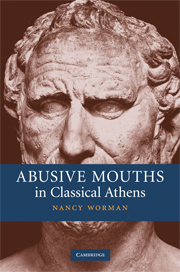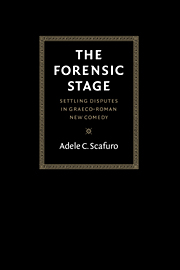Refine search
Actions for selected content:
23990 results in Ancient history
2 - Middle Ages and Renaissance
-
- Book:
- She-Wolf
- Published online:
- 05 August 2012
- Print publication:
- 29 March 2010, pp 40-62
-
- Chapter
- Export citation
PART II - WRITING ABOUT THE SHE-WOLF
-
- Book:
- She-Wolf
- Published online:
- 05 August 2012
- Print publication:
- 29 March 2010, pp 89-90
-
- Chapter
- Export citation
5 - Middle Ages and Renaissance
-
- Book:
- She-Wolf
- Published online:
- 05 August 2012
- Print publication:
- 29 March 2010, pp 117-137
-
- Chapter
- Export citation
PART I - THE CAPITOLINE SHE-WOLF
-
- Book:
- She-Wolf
- Published online:
- 05 August 2012
- Print publication:
- 29 March 2010, pp 13-14
-
- Chapter
- Export citation
7 - Antiquity
-
- Book:
- She-Wolf
- Published online:
- 05 August 2012
- Print publication:
- 29 March 2010, pp 169-192
-
- Chapter
- Export citation
Introduction: Rome and the She-Wolf
-
- Book:
- She-Wolf
- Published online:
- 05 August 2012
- Print publication:
- 29 March 2010, pp 1-12
-
- Chapter
- Export citation
1 - Antiquity
-
- Book:
- She-Wolf
- Published online:
- 05 August 2012
- Print publication:
- 29 March 2010, pp 15-39
-
- Chapter
- Export citation
Conclusion: The Live Wolves of Rome
-
- Book:
- She-Wolf
- Published online:
- 05 August 2012
- Print publication:
- 29 March 2010, pp 245-256
-
- Chapter
- Export citation
Preface
-
- Book:
- She-Wolf
- Published online:
- 05 August 2012
- Print publication:
- 29 March 2010, pp xi-xiv
-
- Chapter
- Export citation
3 - Modern and Contemporary Times
-
- Book:
- She-Wolf
- Published online:
- 05 August 2012
- Print publication:
- 29 March 2010, pp 63-88
-
- Chapter
- Export citation
Bibliography
-
- Book:
- She-Wolf
- Published online:
- 05 August 2012
- Print publication:
- 29 March 2010, pp 257-270
-
- Chapter
- Export citation

The Cambridge Companion to Tacitus
-
- Published online:
- 28 March 2010
- Print publication:
- 21 January 2010

Abusive Mouths in Classical Athens
-
- Published online:
- 08 March 2010
- Print publication:
- 10 April 2008

The Forensic Stage
- Settling Disputes in Graeco-Roman New Comedy
-
- Published online:
- 03 March 2010
- Print publication:
- 06 November 1997

From Hellenism to Islam
- Cultural and Linguistic Change in the Roman Near East
-
- Published online:
- 01 March 2010
- Print publication:
- 03 September 2009

Democracy and the Rule of Law in Classical Athens
- Essays on Law, Society, and Politics
-
- Published online:
- 25 February 2010
- Print publication:
- 17 April 2006
Acknowledgments
-
- Book:
- Race and Citizen Identity in the Classical Athenian Democracy
- Published online:
- 05 May 2010
- Print publication:
- 15 February 2010, pp xi-xii
-
- Chapter
- Export citation
Index of Names and Subjects
-
- Book:
- Race and Citizen Identity in the Classical Athenian Democracy
- Published online:
- 05 May 2010
- Print publication:
- 15 February 2010, pp 331-335
-
- Chapter
- Export citation
Frontmatter
-
- Book:
- Race and Citizen Identity in the Classical Athenian Democracy
- Published online:
- 05 May 2010
- Print publication:
- 15 February 2010, pp i-iv
-
- Chapter
- Export citation
Abbreviations
-
- Book:
- Race and Citizen Identity in the Classical Athenian Democracy
- Published online:
- 05 May 2010
- Print publication:
- 15 February 2010, pp 285-288
-
- Chapter
- Export citation
